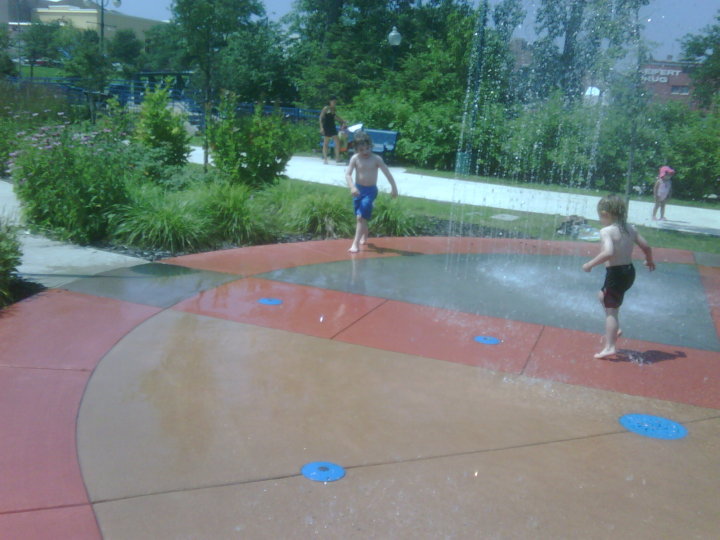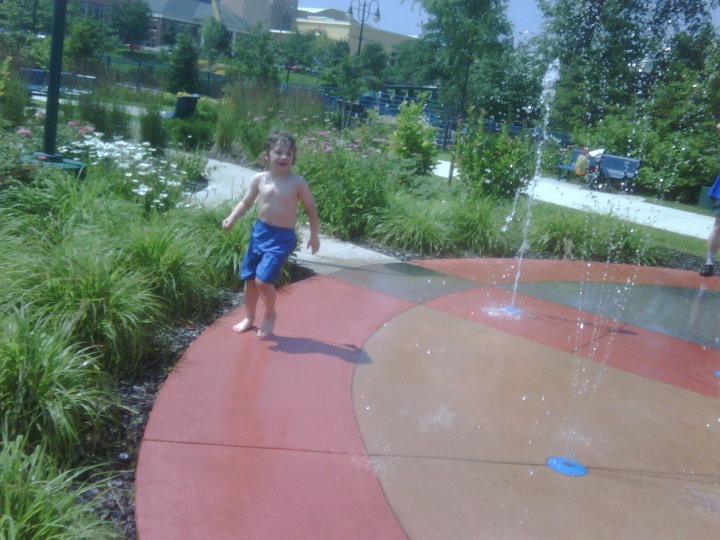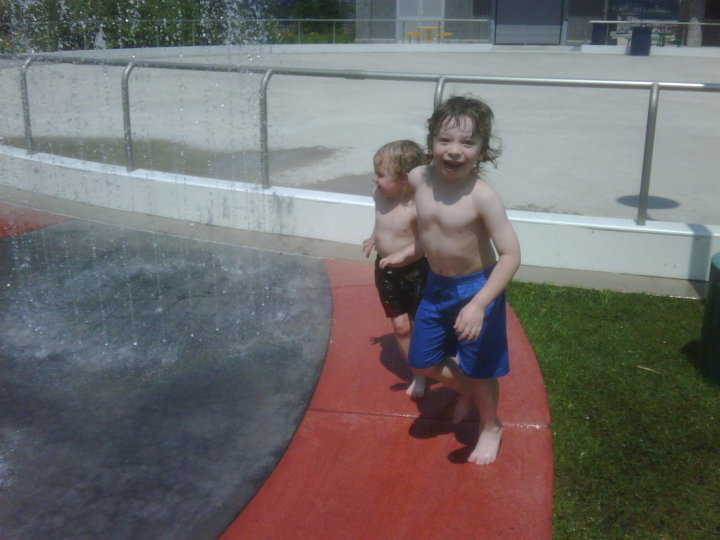One summer’s day about two years ago, I watched a group of children participate in a race. It was in the outdoor play area at the daycare George was attending at the time: it was the end of the day and I had gone to pick him up. As was my custom, I stayed out of sight for a minute, to watch my child without him seeing me. Lined up against the far fence were five or six kids. A makeshift finish line had been etched in the sand. At the daycare teachers “GO!” the kids darted away from the fence and scrambled to the finish line. George was standing apart, shyly watching the action from a short distance away. He looked as if he wanted to join in but did not know how to.
I remember the feeling of immense sadness that came over me. This was such a perfect illustration of George’s autism. The pool of isolation that he was standing in was almost physically tangible. It was as if he was trapped in his own little bubble, unable to be a part of the world around him. Even at the age of four, George was a fast runner: he probably would have won that impromptu little race.
I was reminded of this incident a few days ago, when we were all in Elkhart, Indiana for a long weekend. While out for a walk in downtown Elkhart we stumbled upon a water park. In front of the water park there is a circular paved area: there is a large sprinkler set in the centre of the paving, with a number of smaller sprinklers in a ring around it. When we got there at a few minutes to noon, the sprinklers were turned off but there were a number of people milling around the area with their kids. We had been walking for a while, so we sat down on a bench and allowed the kids to wander around.
At precisely noon, the sprinklers suddenly came to life. It was like a show of fountains: each of the sprinklers made the water spray in a different pattern. They were not synchornized: some of them would turn off while others came on, sometimes the water would only spray up to waist-height, other times it would go high in the sky. About fifteen children left the sides of their parents and started playing in the water. The unpredictable nature of the fountains made it a delight for the squealing, laughing children.
James removed his shoes and socks and whipped off his shirt. He ran straight through the middle of the large central fountain and was soaked within about three seconds. George was initially more hesitant. He slowly and deliberately took of his shoes and socks. We took off his shirt for him, and had a brief moment where he thought this was a cue to strip off completely. He tentatively approached the circle just as the sprinkler closest to him came on, spraying him lightly on the arm. He jumped back in alarm, and for about a minute he simply stood on the perimeter, watching intently. I have no way of knowing for sure, but I have a strong feeling that he was deciphering the sequence of the sprinklers. He’s that kind of kid. He sees patterns where the rest of us might not even know they exist.
Suddenly George darted into the middle, deftly running between sprinklers rather than right into them. He clearly did not have any interest in getting completely wet like his brother, but he seemed to be OK with a light drizzling. At times he ran around the outer part of the circle with his brother; at times he would stop, stick his hand into a fountain of water, and run away giggling.
It was a magical half hour or so. For that brief period of time, George was not an autistic child trapped in a bubble of isolation, not knowing how to be a part of the world around him. He was a regular almost-seven-year-old kid running around having fun with a bunch of other kids. No-one stared at him; no-one noticed anything different about him. Not once did I have to shoot indignant looks at strangers or launch into my he-can’t-help-it-he-has-autism explanations.
For that picture-perfect moment in time, in stark contrast to that long-ago race that he could not participate in, George was just a kid, in perfect harmony with the world around him.












